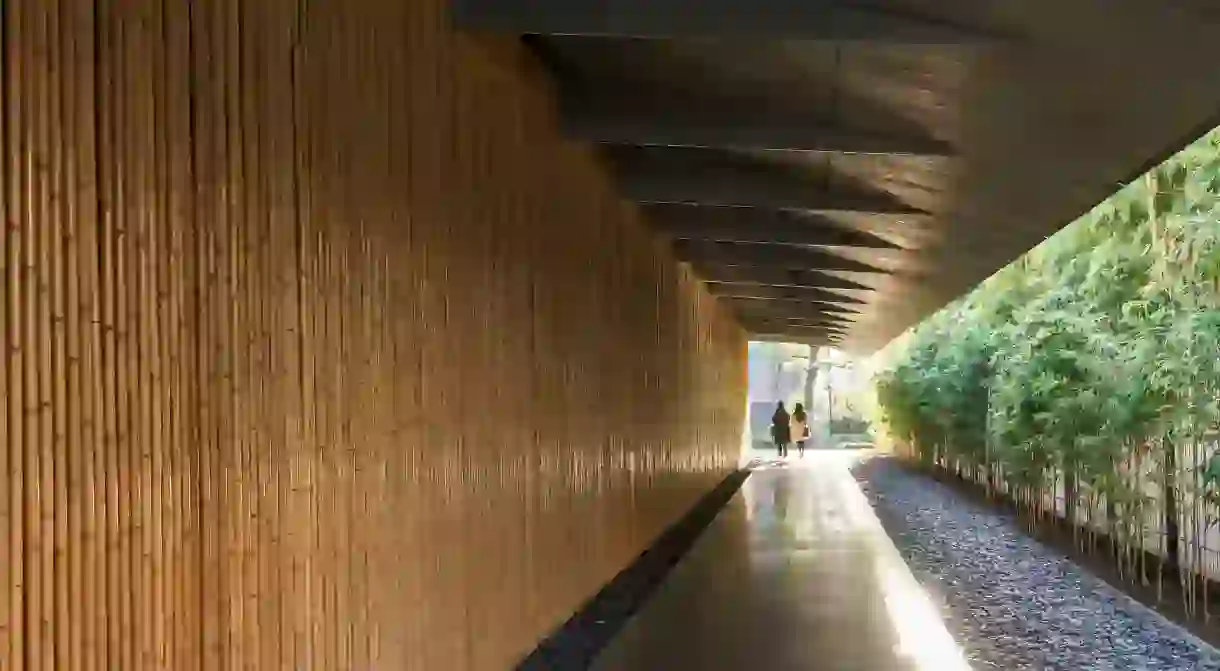Where to See Traditional Japanese Arts in Tokyo

Tokyo is a city often characterised by sci-fi, futuristic architecture and anything at the cutting edge of technological innovation. But the city is also deeply connected to its past. Delve into Tokyo’s creative history with Culture Trip’s guide to traditional Japanese practices.
Nezu Museum
Home to the Japanese businessman and philanthropist Nezu Kaichirō , the Nezu Museum houses one of Tokyo’s most comprehensive collections of Japanese and East Asian art, including calligraphy, painting, ceramics, and textiles. After Nezu’s passing, his son turned his late father’s home into a public museum in order to preserve and share the impressive collection. Walk inside and you will also find a small, lush Japanese-style garden complete with tranquil ponds and small Buddha statues.
National Noh Theatre
Different from kabuki, and perhaps underrated, Noh is a very unique form of Japanese performing arts. Dating back to the 14th century, this form of theatre, which involves dance, music and drama, requires performers to wear restrictive masks and long, traditional-style garments while performing in sync to the music. The eye-catching shows are run by the Japan Arts Council, which hosts performances on occasion at the National Noh Theater in Sendagaya.

2k540 Aki-Oka Artisan
While the neon-drenched area of Akihabara is known for its anime characters and endless toy stores, its also home to one of Tokyo’s best artisanal shopping strips. Known as 2k540 Aki-Oka Artisan, the collection of stores runs underneath the Yamanote line between Akihabara and Okachimachi Stations (hence the name Aki-Oka). Here you will find around 50 different shops and cafés, all displaying classic Japanese arts and crafts created by contemporary artisans.

Theatre Museum in Waseda University
To learn more about Japan’s love of theatre, it’s worth heading over to Waseda University, where you will find the city’s fascinating Theatre Museum, which is also Asia’s only museum dedicated solely to theatre. Once inside, you will discover exhibits devoted to classic Japanese performing arts such as kabuki and noh, as well as a large display of Western theatre’s influence on modern Japanese performing art. The Theatre Museum often includes visitors in their events by inviting them to join in on role-playing workshops and games.
Amuse Museum
When it comes to Japanese art, there’s arguably no form more influential and iconic than ukiyo-e woodblock printing. Located in the historic neighbourhood of Asakusa, the Amuse Museum is home to a large collection of ukiyo-e prints as well as textile from the Edo period. Located near Asakusa Station, it is an ideal sightseeing spot to add to your itinerary.
Washi Paper Museum
The Paper Museum in Oji is a museum like no other. Home to around 40,000 items, it covers all facets of the paper world, both practical and artistic. Inside this rather striking building, you will find displays covering the invention of paper, its history, and, of course, origami. For a chance to make your very own washi (Japanese paper), make sure to visit the museum on a weekend.
Ome Kimono Museum
Home to a collection of more than 500 kimonos, the Ome Kimono Museum is a celebration of the traditional garments. Built inside a 200-year-old storehouse, the collection on display changes seasonally, offering no shortage of stunning exhibits. Stroll around the museum and you will find kimonos worn by the imperial family and historical pieces, including the outfits worn by Prince Nashimoto at the coronation of Emperor Taishō during the early 1900s.
Did you know – Culture Trip now does bookable, small-group trips? Pick from authentic, immersive Epic Trips, compact and action-packed Mini Trips and sparkling, expansive Sailing Trips.













